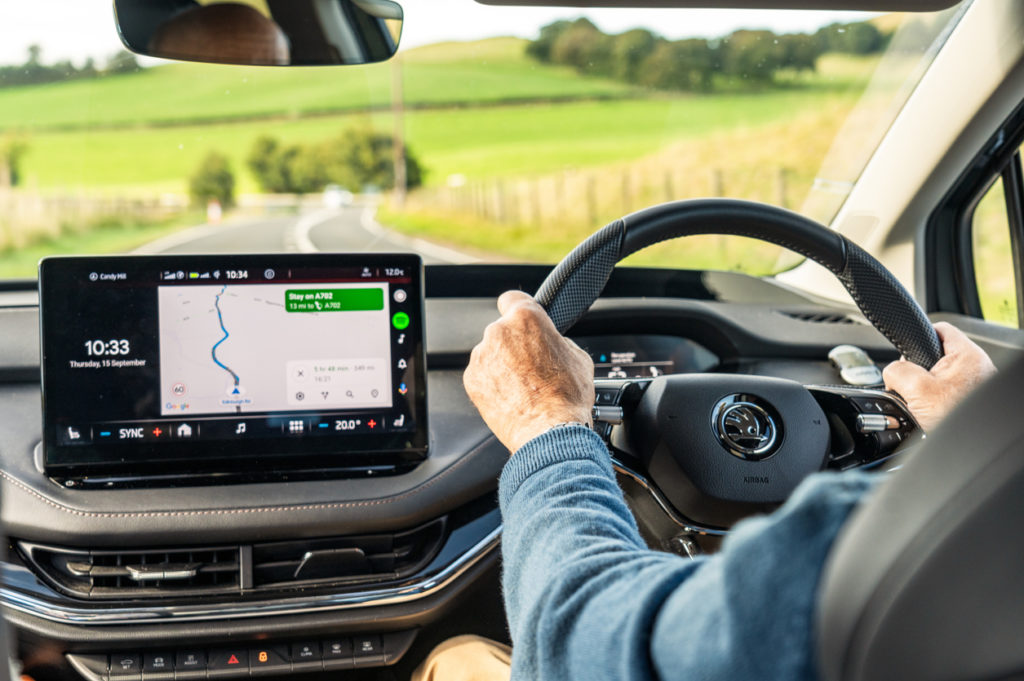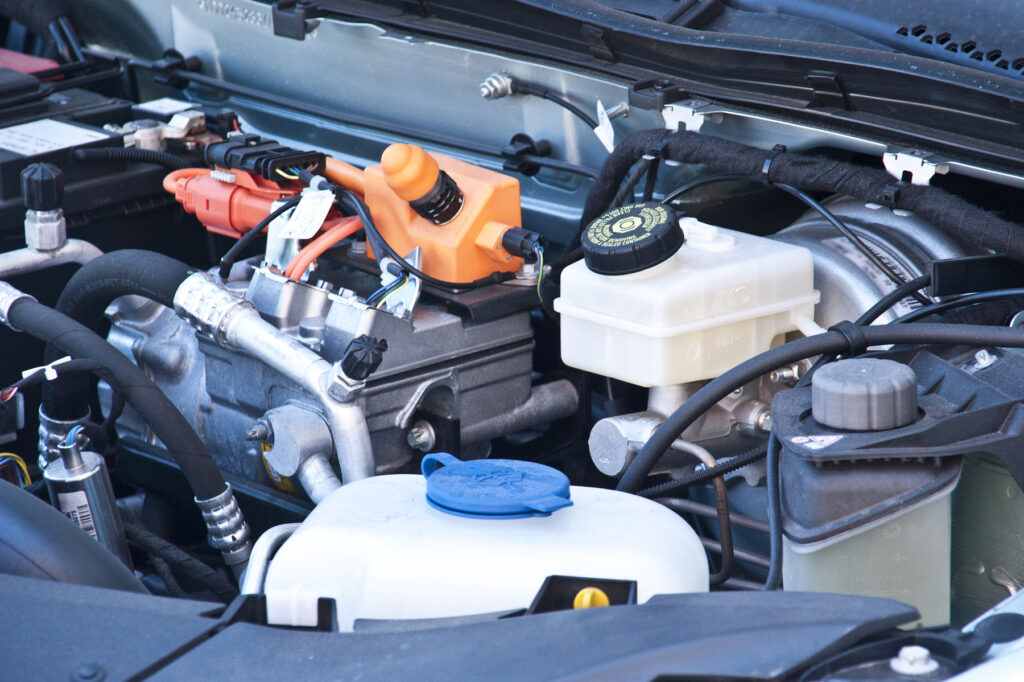In days gone by, negotiating car parks and parallel parking outside your house was, quite frankly, a bit of a chore. But the emergence of power steering changed all that, allowing for stress-free manoeuvres with the lightest of touches.
Since then, power steering has come on a long way, with hydraulic systems giving way to sophisticated electrically-powered variations in recent years. This hasn’t gone down well with some motoring purists, however, and the debate about which type of power steering is better continues to rage on.
So, if you’re comparing car models and want to understand which system you’d prefer, we’ve put together this essential guide on electric and hydraulic power steering systems, including how they work and their respective pros and cons.
Hydraulic power steering
What is hydraulic power steering and how does it work?
Hydraulic power steering is the earliest form of power-assisted steering. It’s been around for decades but became a standard feature on most cars in the late 1990s and early 2000s.
A hydraulic power steering system incorporates a closed-loop that features pressurised fluids, a hydraulic belt-driven pump, valves, and a cylinder. The belt is driven directly by the engine, so the higher the engine speed, the faster the pump.
As high-pressure power steering fluid is transported through the pump, it enters the steering rack and rotary valve; this is where the power is applied, with the result being a light and responsive steering feel, particularly during low-speed manoeuvres.
What are the pros and cons of hydraulic power steering?
Hydraulic power steering has been around for over 100 years, so the system is tried-and-tested and has been refined to near-perfection over time. But what are the main benefits and disadvantages you can expect from a hydraulic power steering system? Let’s take a look.
 The pros of hydraulic power steering
The pros of hydraulic power steering
- Excellent driver feel and handling performance: Since hydraulic systems provide a direct connection to the steering system, driver feedback and overall handling experience are second to none.
- Simple and affordable to maintain: Hydraulic power steering is a well-recognised setup that most garages should be able to diagnose and maintain at a standard rate.
- Less expensive than EPAS systems: That’s right, cars fitted with hydraulic power steering are comparably more affordable than those featuring EPAS (electric power assisted steering), which may be a key consideration for some motorists.
The cons of hydraulic power steering
- Mismatch power assist: When the car is driven slowly, the belt doesn’t move fast and therefore the assistance is reduced. When you want to manoeuvre at low speeds the wheel doesn’t turn as fast. Conversely when you’re driving fast and need wheel stability, more assistance is given as the belt is moving faster.
- Prone to leaking: As the system requires fluid, it can cause leakages and can block if particulates get into the system. This liquid also needs changing at an interval.
Electric power steering
Electricity has gradually become the preferred method for powering a variety of vehicle systems, not least steering, and is used near-universally on all new makes and models. Below we’ll fill you in on how it works along with its benefits and disadvantages.
What is electric power steering and how does it work?
Electric power steering is a type of steering setup that utilises electric motors to aid handling at low speeds. Known in the motoring industry as EPAS (electric power assisted steering), these systems were developed to replace the earlier hydraulic variation, though they do have their critics – for reasons we’ll get to later.
 EPAS systems incorporate a series of sensors that detect the required amount of steering lock being applied to the steering wheel, before sending a signal to electric motors mounted on either side of the steering column. These motors add extra lateral force through rotational power, improving energy transfer and providing a light and responsive steering feel.
EPAS systems incorporate a series of sensors that detect the required amount of steering lock being applied to the steering wheel, before sending a signal to electric motors mounted on either side of the steering column. These motors add extra lateral force through rotational power, improving energy transfer and providing a light and responsive steering feel.
What are the pros and cons of electric power steering?
Electric power steering has been the subject of intense debate in motoring circles, with some arguing that it’s been an unequivocal game-changer and others that it’s in no way as good as its predecessor. So, what are the benefits and disadvantages of EPAS systems? We’ve laid it all bare below.
The pros of electric power steering
- Ties in with other vehicle systems: Since EPAS systems form part of the car’s wider electronic network, they can sync with other onboard systems including individual functions like automatic parallel parking, for example. Indeed it’s thought that EPAS has a significant role to play in the evolution of AI and self-driving car technologies.
- Easily adjustable for a different handling experience: One of the most appreciated benefits of EPAS systems is the ease at which they let drivers adjust the handling setup to their exact requirements. For example, hitting “sport” mode in a modern car usually changes how an EPAS system works, adding extra weight through the corners for a more tactile experience. The most advanced EPAS systems allow total freedom of customisation, for a genuinely individual handling and steering setup.
 The cons of electric power steering
The cons of electric power steering
- Reduced driver feel: A major downside of EPAS systems is the reduced feel they offer through the steering wheel. Since there’s no hydraulic connection to the steering system, many motorists comment that EPAS assemblies offer nowhere near the driving enjoyment of a regular hydraulic system.
- Poor calibration: Like any electrically-powered system, electronic power steering requires precise calibration to ensure optimal performance. On cheaper makes and models, it’s not uncommon to find large variances in how EPAS systems are set up in the factory, resulting in a lasting trade-off in steering performance.
So, there you have it, a direct face-off between electric and hydraulic power steering systems. If you drive a car with hydraulic power steering, Prestone Power Steering Fluid is the product to reach for. Capable of reducing wear and preventing corrosion, it’s guaranteed for use in all vehicles. Tap the link to learn more or contact us if you have a specific enquiry.



